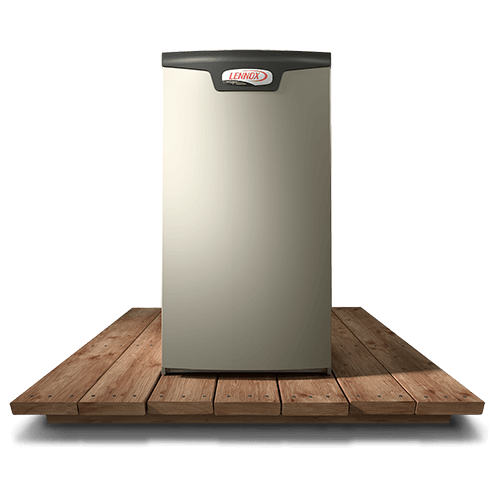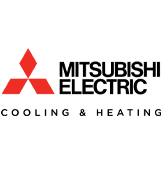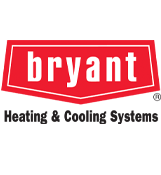
A furnace is one of the most classic ways of heating a house in the winter. However, many people are unaware of how it works. A lot happens in between you pressing a button on your thermostat and feeling warm air coming out of the vents. Every time you want warm air, your furnace is going through this process.
Your Thermostat Turns the Heater On
The heating cycle starts with the thermostat. A thermostat is a small device that contains some controls: a thermometer, and a relay switch. When you set the thermostat to a certain temperature, it compares that temperature to your interior temperature. If the temperature in your house is lower than your desired temperature, you’ll hear a small “thunk.”
This noise is a relay switch moving inside of your thermostat. It sends a little electrical signal to your furnace, telling it that it is time to start heating your home. Once your heater turns on, your thermostat keeps monitoring indoor air to see when the desired temperature is finally reached.
The Furnace Starts to Heat Up
As soon as the thermostat tells the furnace to turn on, it starts to generate heat. How the furnace does this will depend on what type of furnace you have. Most furnaces run on a type of fuel such as natural gas, propane, or oil. An electric ignition switch or a pilot light starts a small fire, and then these furnaces will literally burn the fuel to generate heat. They have a small valve that allows a constant, steady flow of fuel to keep a flame burning.
There are also some furnaces that run on electricity. Instead of directly burning fuel, electric furnaces run high-powered energy through a heating element to generate heat. Another big difference between electric and fuel furnaces is that electric furnaces don’t need a vent. Unlike gas or oil furnaces, they don’t produce any smoke or dangerous carbon monoxide fumes.
A Blower Pulls Cold Air to the Hot Furnace
Inside of the big metal box that contains your furnace, there is also a motor that powers a strong fan. This is called the blower fan. It spins rapidly to start moving the air around inside your home. The blower is carefully set up to work with a system of ducts and vents. As it spins, it pulls air in from a supply vent. The blower usually doesn’t turn on the second your thermostat turns on the furnace. Instead, there is a brief delay while the furnace warms up a little. After a few seconds of heating up, the blower fan will begin to run.
Before the air enters the furnace itself, it passes through an air filter. This fine mesh of fibers helps to trap dirt, dust, and pet hair. Therefore, this part of the heating cycle does more than just warm air. It also helps to improve the air quality inside your house. After passing through the filter, the cold air is sucked into the furnace, so it can be properly heated.
The Furnaces Transfers Heat to the Air
Once cold air enters your furnace, it starts to warm up. The exact way your furnace transfers heat will depend on the type of furnace you have. If you have an electric furnace, things are straightforward. The air passes over the heating element, picking up heat directly from the electric heating elements.
Things are slightly more complicated for fuel furnaces. You cannot pass air straight over the flame, or it will potentially blow out the flame or spread the fire around. Instead, the flame transfers heat to a metal element called a heating exchanger. Older furnaces might just let heat transfer to the heating exchanger naturally, while newer ones might have a small, secondary motor that pushes hot air to the exchanger. Either way, the air goes over the superheated metal of the exchanger and picks up heat before it moves on into your home.
Warm Air Moves Through Your Ducts
The blower does more than just pull air into the furnace. Due to the way your ductwork is set up, the air is constantly moving in a loop. Once it goes through your furnace, the blower keeps pushing it onwards into the rest of your return ducts. Unlike the supply vent, this isn’t a single, large vent and duct.
Instead, the return ducts are usually a system that branches outwards. A duct will travel off to each room in the house. This allows a vent to add warm air to each room and evenly heat the house. The exact placement of your ducts depends on your house. Some people have furnace ducts on the floor, since hot air rises. However, in homes where the ductwork is mostly used for air conditioning, the heating vents might be on the ceiling or top of the wall.
Any Unnecessary Byproducts Are Vented
One thing that makes furnaces stand out from basic HVAC systems is the fact that they require vents. Any type of furnace usually makes a few different byproducts. The first byproduct is simply heating. A furnace tends to get so hot that it can crack the heating exchanger or damage other delicate components. Therefore, a small amount of the heat produced by your system is usually vented outside. This keeps your furnace from getting literally as hot as a flame while it’s trying to warm air.
The other byproduct that requires a vent is carbon monoxide. Any furnace that runs with combustion is constantly producing this dangerous chemical. If it backs up into your house, it could make you sick or even kill you. Therefore, ventilation is an essential part of keeping a furnace working. During your routine maintenance, a technician will carefully check to ensure your furnace is venting properly.
The Cycle Repeats Until You Reach Your Desired Temperature
Once you start the heating cycle, your furnace keeps running continuously until your home is just as warm as you want it to be. The furnace is constantly pulling in cold air from your house and heating it up. Each cycle removes more chilly air and adds more warm air to your house.
The exact length of time it takes to warm your house completely will depend on just how cold it was to start. Typically, a furnace runs for around 10 to 90 minutes to reach your preferred temperature. Once your thermostat setting is reached, the thermostat will move the relay to the off position. This will tell your furnace it can go ahead and turn off, leaving you to enjoy your toasty, warm air.
If you have any other questions about how a furnace works, ask Polar Air & Heating, Inc.. Our team is happy to help you learn about your system, and our highly trained technicians can assist with a variety of HVAC installations, maintenance, and repairs. Find out more about the services we provide in Las Vegas by calling us today.




















